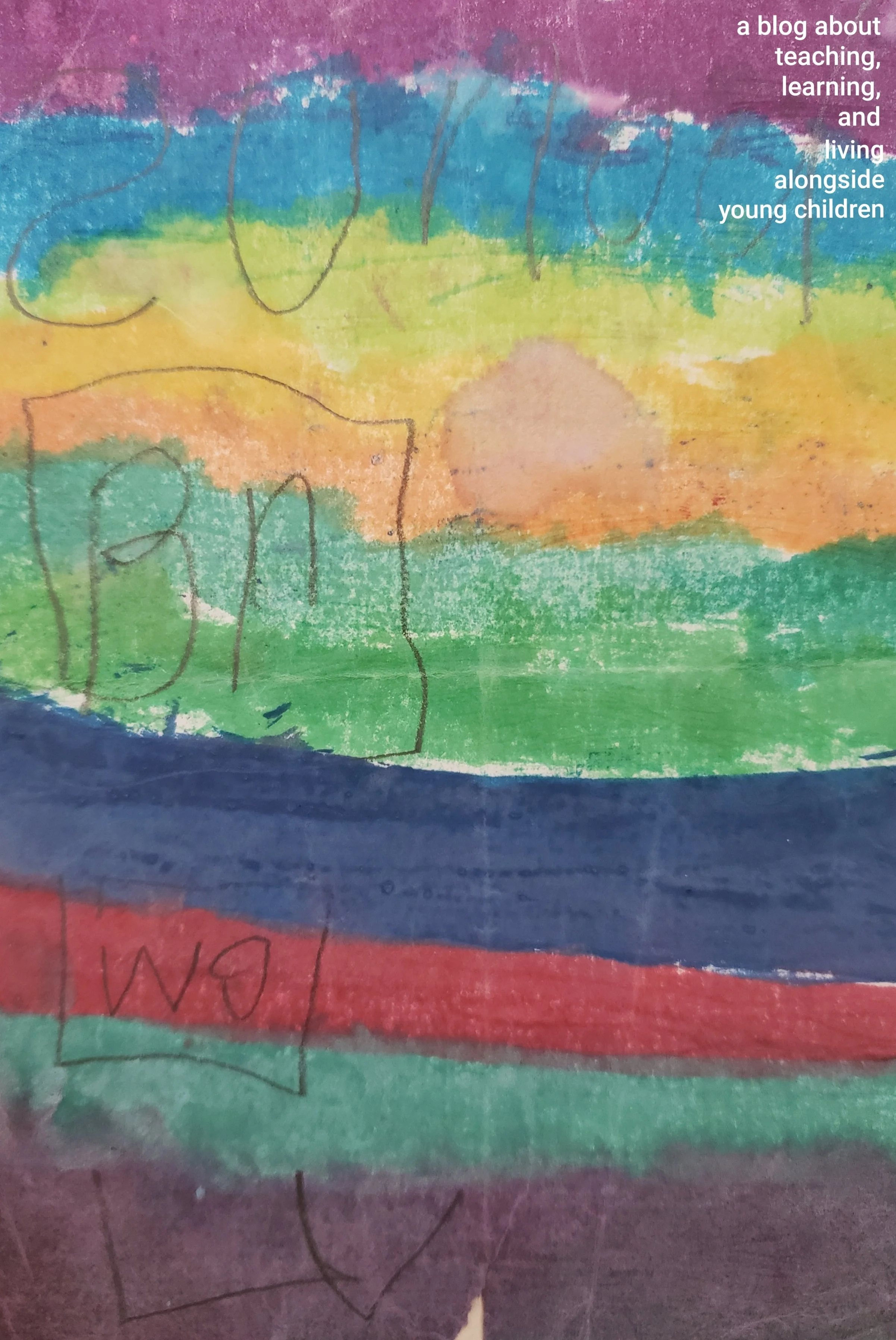Practice, Not Magic: Dropping Off and Saying Goodbye at Preschool
/Illustrated by Alyssa D., Age 7
Practice, Not Magic is a series of posts about the practical aspects of living alongside young children. Focusing on one vignette, we can parse out the developmental from the situational and think through common dilemmas faced by parents, teachers, cool aunts, chosen family, et al. The principles below can be adapted for either home or the classroom, but are a guide for thinking, not a prescription.
Issue to work through: Supporting a child to say goodbye and separate from family at school in the morning - a universal, though many-nuanced, part of daily life alongside children who go to school or care outside of home. Children’s reactions/behaviors might vary depending on their age, but the basics of how caregivers can best respond are primarily the same. The goal should always be to build a dependable routine that allows the child to experience emotions, successfully move through them, and gain a sense of closure in the transition.
Context and complications: Learning to say goodbye to each other (family and child alike) takes practice. Children take their cues from the adults around them when it comes to new or newly challenging scenarios. If we remain calm and confident, then the children in our care have less reason to worry that the new setting or separation is negative. First, second, and tenth (?) goodbyes are highly likely to cause big emotions. Our goal is to allow the child to feel those emotions, acknowledge them, and then remain consistent both in the way we respond and the way our family always comes back. Over time, children learn to trust this process, regulate their emotions, and gain confidence in the patterns of life. Likewise, there are a myriad of other circumstances that can contribute to challenging goodbyes at any time, any of which adults should take into consideration in order to best support goodbyes from day to day. Was it a rushed morning? No time for a satisfying breakfast? Have family members been traveling or otherwise had a change in daily life? Is the child anticipating an upcoming change, like kindergarten or a new baby? The more we understand the circumstances that contribute to a child’s experience, the more we can meet their needs differently the next time. While goodbyes are an unavoidable part of life that we can’t change, we can remember that we need to get to up a little earlier to beat the Wednesday traffic.
Supportive Strategy: The key to successful goodbyes is a clear, pre-determined, and consistent routine for saying goodbye each day. Even in situations where multiple people have to drop off at school, prepping children for a predictable-as-possible transition is essential to their processing the goodbye and developing autonomy for moving through it. Make a plan with the child ahead of time that is realistic for everyone (not 700 kisses or the mythical “five more minutes”), within the procedures of the school (like where a teacher can see you), and that centers around something invariable, like saying goodbye each day at the door or cozy couch (NOT relying daily on a teacher who may be absent or busy when you really need to get out the door). Once you have a routine established, stick with it. Of course, there will always be some tough days that require the assistance of school staff, but the main goal for everyone is to find a plan that supports the child and family to be autonomous in that personal, intimate moment of saying goodbye to one another. Preschool itself is not forever, but learning to separate and reunite in a healthy way is a lifetime skill.
What this strategy might sound like:
Beforehand, perhaps the night before school and again in the car on the way:
Caregiver/parent/family member: Do you remember our plan for saying goodbye at school tomorrow?
Child: Read two books!
Caregiver: Yes, and then what?
Child: And then two kisses and one hug at the door.
Caregiver: Yes, and then we say goodbye, and you can watch me walk to the car or you can go back to the sandbox and play. If you are feeling sad about saying goodbye, what can you do?
Child: Hmmm, I can draw you a picture.
Caregiver: Sure. I know Teacher Micah and all the other teachers can help you get the paper ready. You can tell them how you are feeling, too. And even when you are feeling sad, you can remember that I always come back.
At drop-off, stick to the plan as much as possible. Check in again later about how the plan worked, how the feelings felt, and what parts of the plan could be adjusted if need be.


